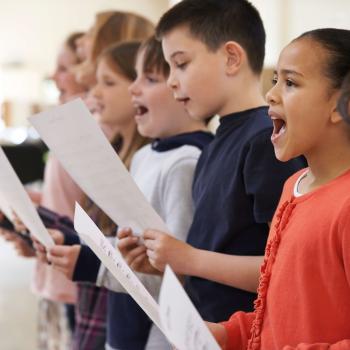Choral Reading

About this Strategy Guide
Choral reading broadens experiences with different genres. You can choose materials that teach content area subject matter or reading content such as phonics, vocabulary, and rhyme. Through repeated reading of the text, the student becomes a more fluent reader, which allows for increased content comprehension.
Research Basis
Support for choral reading is found in several reading theories and educational paradigms, including Dowhower (1987), Rosenblatt (1978), Samuels (1979), and Schreiber (1980). Through repeated readings of the text, the reader increases sight word vocabulary and ability to decode words quickly and accurately. This fluent reading enables the reader to spend less time on decoding and have greater comprehension of the text (Pikulski & Chard, 2005).
Strategy in Practice
-
Suggestions for selecting material
-
Choose material that the student can read—poems, song lyrics or picture books.
-
Look for pieces that will put the student’s imagination to work.
-
Begin with simpler pieces until students are familiar with the procedure.
-
Select a poem, song lyric, or text from a book that contains words that will come alive when read aloud. For example, use material that contains descriptive words, vivid verbs, onomatopoeia, alliteration, and/or rhyming words. Or, choose material that contains a mood that is enhanced through oral interpretation or dialogue.
-
Use poems to teach, enrich, or reinforce content across the curriculum. Poems can be used teach phonics, word families, and vocabulary as well as math, science, and social studies content.
-
-
Procedure
-
Introduce the selection to the students by reading it aloud while they follow along silently.
-
Have everyone read through the selection aloud in unison at least one time.
-
Ask different groups of students to take turns reading lines, stanzas, or paragraphs of the poem together.
-
Group readers into boys and girls, brown eyes and blue eyes, odd number birthdays and even number birthdays, or odd number birth month and even number birth month.
For example, in a given poem, say, “Boys read the first two lines and girls read the next two lines. If you have blue or green eyes read the next paragraph and if you have brown eyes read the following paragraph.” When the poem is reread, create different groups, thereby giving all students a chance to read.
-